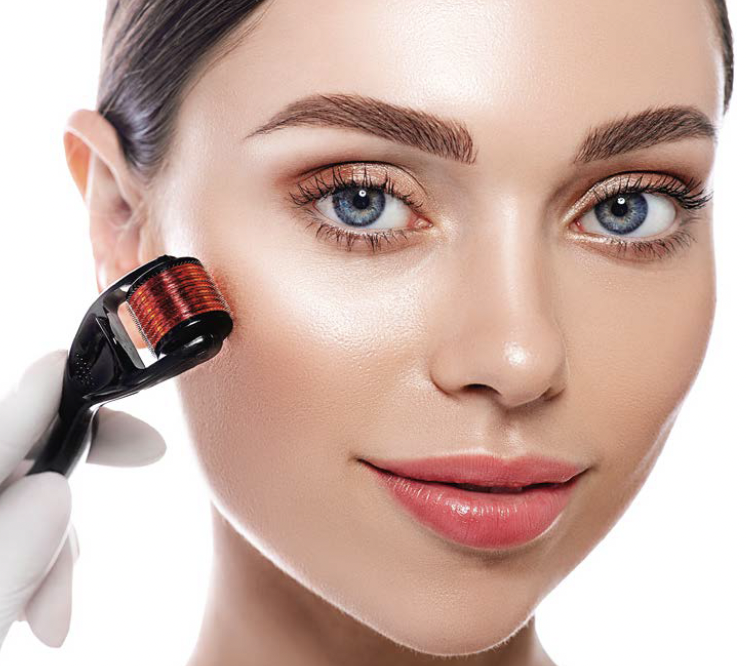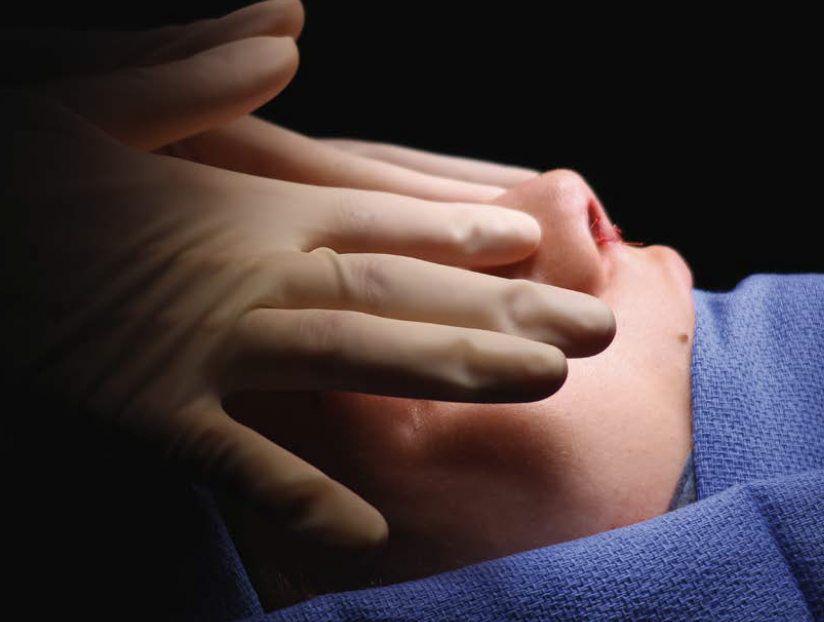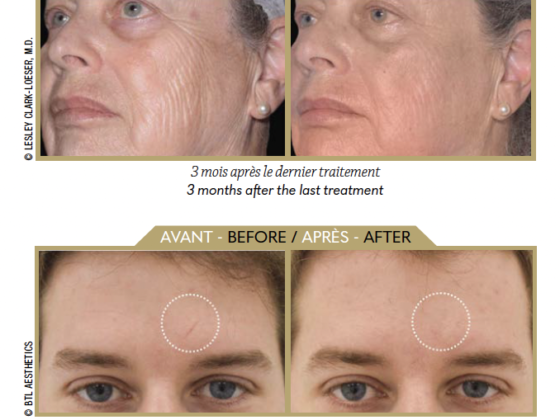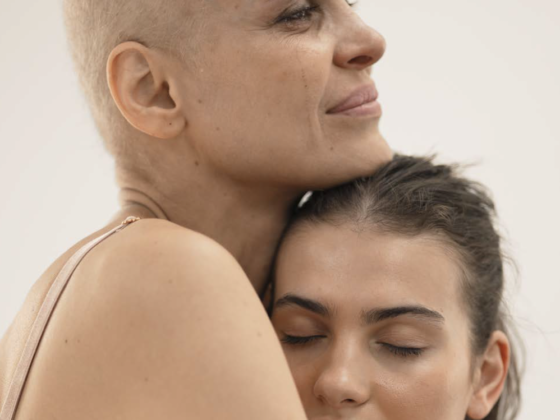Dr Brice Tchakerian
A combination of platelet-rich plasma (PRP) and non-cross-linked hyaluronic acid (HA) offers a promising synergy for skin rejuvenation.
In a world that focuses on our appearance, the skin symbolises youth and vitality. The demand for aesthetic medicine is on the rise, which reflects a desire to reduce the visible signs of aging, such as wrinkles and sagging skin.
THE CUTANEOUS TISSUE AND HOW IT AGES (HELIODERMIA)

The skin is the body’s largest organ. In the dermis, hyaluronic acid (HA) retains water to ensure the tissues stay hydrated and regenerate themselves, which keeps the skin firm and supple. Skin aging, or heliodermia, is caused by intrinsic factors (age, genetics) and extrinsic factors (UV, pollution). These factors cause HA levels to drop and collagen and elastin to break down, which leads to wrinkles and sagging. The fibroblasts, which are less active, aggravate this situation, while the growth factors become less efficient, amplifying the signs of aging. (1)
HYALURONIC ACID: ROLE, EFFECTS ON THE SKIN AND AGING
Hyaluronic acid (HA) is essential to the extracellular matrix. It is gradually lost from the skin as we age, leading to a loss of hydration, firmness and elasticity. Recognised for its hydrating properties, HA retains up to 1,000 times its weight in water, maintaining the skin’s suppleness. It thus improves elasticity, reduces wrinkles by plumping the skin and promotes healing. In aesthetic medicine, HA injections fill deep wrinkles, restore lost volumes and redefine the facial contours. (2)
PRP: A CONCENTRATION OF AUTOLOGOUS PLATELETS

Platelet-Rich Plasma (PRP) is a concentrate of platelets harvested from the patient’s own blood that is rich in growth factors, to stimulate tissue regeneration. When used for skin rejuvenation, it increases collagen production and improves the skin texture. PRP (RegenPRP™) is a version produced using the RegenKit®-BCT, which guarantees a standardised preparation by separating the platelets and reducing the leucocytes and red blood cells, thus limiting inflammation. PRP stimulates the fibroblasts to promote the production of collagen and elastin, improving elasticity and reducing wrinkles. In vivo studies show that this treatment increases the dermal thickness and reduces wrinkles. When combined with hyaluronic acid (HA), it boosts the overall firmness and appearance of the skin, offering an even more visible rejuvenating effect. (3)
METHOD OF PREPARATION: COMBINING PRP WITH HYALURONIC ACID (REGENPRP™- HA)
PRP (RegenPRP™), combined with hyaluronic acid (HA), is an key advance in aesthetic medicine. This synergic combination couples the regenerative properties of PRP with the hydrating and volumising properties of HA. The solution is prepared in a closed circuit, ensuring it is both safe and reproducible. A thixotropic separator gel efficiently isolates the platelets, plasma and HA from the blood’s other components. The PRP (RegenPRP™) – HA preparation is drawn from a 4ml sample of the patient’s blood, which is then treated with an anticoagulant. After being centrifuged for 5 minutes at 1,500g, the blood’s components separate according to their density. The heavier red blood cells are isolated by the gel, while the platelets and HA are redistributed in the plasma. This association offers a synergic action: the PRP stimulates cell regeneration and collagen production, while the HA boosts skin hydration and elasticity. The treatment improves the skin’s firmness and texture, for optimised rejuvenation. (4)
SCIENTIFIC STUDY AND PROTOCOL OF USE FOR SKIN REJUVENATION
A clinical study showed the efficacy of injecting PRP (RegenPRP™) combined with hyaluronic acid (HA) for facial skin rejuvenation. Monitoring 93 patients over 184 days, the results revealed a significant improvement in the appearance and elasticity of the skin, evaluated using the FACE-Q scale. The patients who were given PRP (RegenPRP™) – HA achieved better results than those only treated with PRP or HA. The protocol included a topical anaesthetic, followed by 3ml intradermal injections in either cheek and an additional 1ml with SkinRoller. (5)
USING PRP – HA IN RHINOPLASTY: IMPROVING THE CUTANEOUS ENVELOPE AND REDUCING POST-OPERATIVE IRREGULARITIES
Rhinoseptoplasty can lead to irregularities as the skin heals. The combination of hyaluronic acid (HA), PRP and diced cartilage shows promise for optimising the results in a preventative way. This approach combines structural support and tissue regeneration, promoting better healing and reducing the risk of irregularities, particularly on the nose’s dorsum. A pilot study showed encouraging results, with high patient satisfaction and an absence of complications. (6) Combining PRP and hyaluronic acid is a major advance in anti-aging medicine, promoting tissue renewal, hydration and skin elasticity. It is highly promising and could redefine the standards of aesthetic treatments thanks to its encouraging results.
References
1. Yaar M, Gilchrest BA. Photoageing: mechanism, prevention and therapy. Br J Dermatol. 2007 Nov;157(5):874–87.
2. Bukhari SNA, Roswandi NL, Waqas M, Habib H, Hussain F, Khan S, et al. Hyaluronic acid, a promising skin rejuvenating biomedicine: A review of recent updates and pre-clinical and clinical investigations on cosmetic and nutricosmetic effects. International Journal of Biological Macromolecules. 2018 Dec;120:1682–95.
3. Phoebe LKW, Lee KWA, Chan LKW, Hung LC, Wu R, Wong S, et al. Use of platelet rich plasma for skin rejuvenation. Skin Research and Technology. 2024 Apr;30(4):e13714.
4. Hersant B, SidAhmed-Mezi M, Aboud C, Niddam J, Levy S, Mernier T, et al. Synergistic Effects of Autologous Platelet-Rich Plasma and Hyaluronic Acid Injections on Facial Skin Rejuvenation. Aesthetic Surgery Journal. 2021 Jun 14;41(7):NP854–65.
5. Hersant B, SidAhmed-Mezi M, Niddam J, La Padula S, Noel W, Ezzedine K, et al. Efficacy of autologous platelet-rich plasma combined with hyaluronic acid on skin facial rejuvenation: A prospective study. Journal of the American Academy of Dermatology. 2017 Sep;77(3):584–6.
6. Tchakerian Brice. Combined camouflage technique in primary reduction rhinoplasty using diced cartilage, PRP, and HA. Sorbonne University.
Dr Brice tchakerian

Clinic head for the universities-assistant at the Paris hospitals. Plastic, reconstructive, aesthetic and maxillofacial surgery department at the Henri-Mondor-APHP university hospital. Practises maxillofacial, plastic, reconstructive and aesthetic surgery and regenerative medicine.














